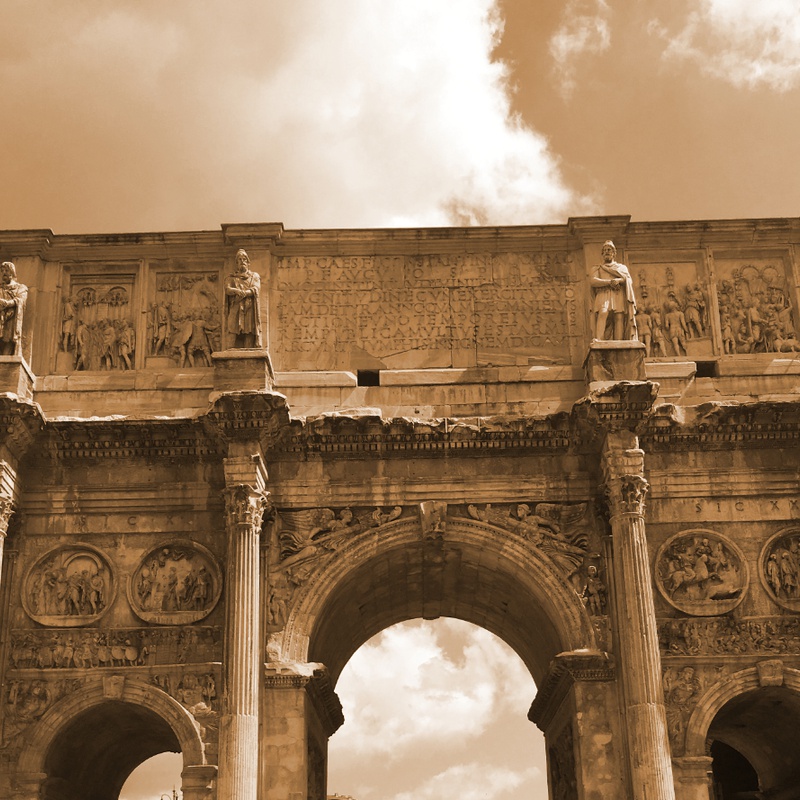Posted by Shazarch on 18 Mar 2021
Arch of Constantine
312 - 315 AD, Rome
Archaeological site
The Arch of Constantine, situated on the historic route of triumphal processions between the Circus Maximus and the Arch of Titus, is the most substantial honorary arch that has survived to modern times. Emblematic of Emperor Constantine's ideological messaging, it commemorates his victory over Maxentius on October twenty-eight, three hundred twelve AD, following the battle at the Milvian Bridge. An inscription on the central vault reveals that the Senate dedicated the monument to Emperor Constantine in commemoration of this triumph and to mark the decennalia, the tenth anniversary of his reign, on July twenty-five, three hundred fifteen AD. The arch's marble relief decorations, conceptualized and executed during the Constantinian era, predominantly feature materials repurposed from other imperial monuments. The main fronts and sides of the arch display symmetrical arrangements of reliefs from the periods of Trajan, Hadrian, Marcus Aurelius, and, in the lower section, Constantine himself. All imperial visages in the reliefs have been altered to resemble Constantine, complete with a nimbus symbolizing imperial grandeur. The diverse imagery adorning the arch is woven together by a singular narrative: the celebration of Constantine's political vision for restoring the empire. He sought recognition as the new sovereign of Rome's destiny and as the legitimate victor over Maxentius. To achieve this, Constantine selected a time-honored symbol of imperial legacy—the triumphal arch—to convey his victories. While the structure's design tells of his accomplishments, its adornment with sculptures from earlier eras serves to anchor Constantine's authority in the historical narrative of the empire's past heroes, thus endorsing the stability of his rule and the policies he implemented.
